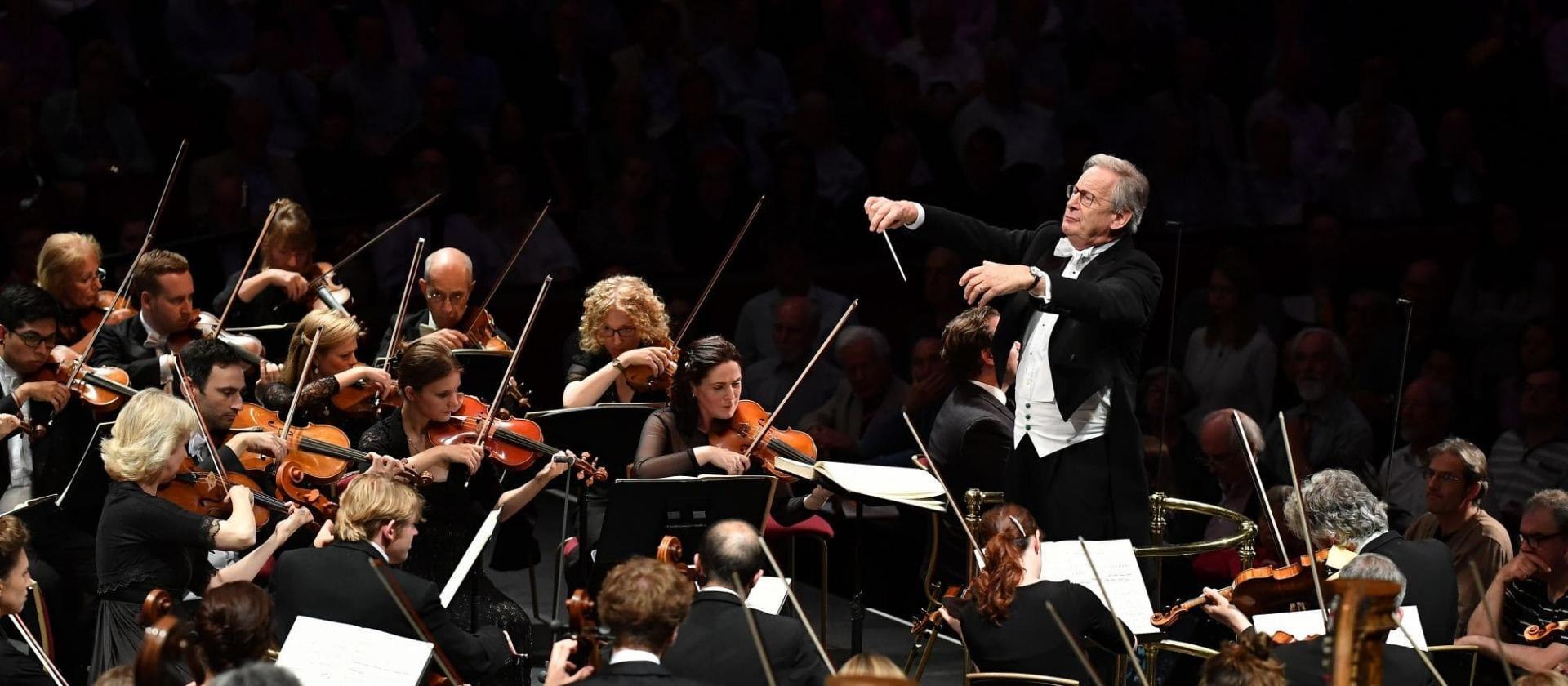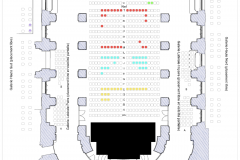Bach, Cantatas II, Actus Tragicus
June 2026 | ||||||
|---|---|---|---|---|---|---|
Mo | Tu | We | Th | Fr | Sa | Su |
Bach: Cantatas II – Actus Tragicus | Concert
The Bachfest Leipzig invited their audience to choose the works for two programs of Bach cantatas, filled with masterpieces: John Eliot Gardiner followed the public’s wishes by composing two programs based on these recommendations.
This second program opens with a serious meditation on death, grief, and faith, gradually rising towards hope, joy, and the promise of spiritual awakening. A sonic and theological journey, where seventeenth- and eighteenth-century German sacred music reveals all its expressive power, between Lutheran tradition and Baroque genius.
The motet Christ lag in Todesbanden is one of Johann Sebastian Bach’s very first cantatas, written around Martin Luther’s Easter chorale. It combines contrapuntal rigor with striking dramatic fervor, evoking the victory of life over death in a series of highly intense choral variations.
With Was betrübst du by Johann Hermann Schein, the atmosphere becomes more intimate. This motet sets a psalm of lament to music, expressing the believer’s anguish in the face of God’s apparent abandonment. Schein’s refined writing, influenced by the Italian madrigal, gives this text a poignant expressiveness.
The cantata Ich hatte viel Bekümmernis is a vast, almost dramatic spiritual fresco in two parts. Bach deals with the theme of affliction with overwhelming intensity before gradually bringing forth hope and trust, culminating in a final chorus of exultation. It is a work of passage, from night to light, where faith acts as an inner transformation.
After this journey through mourning and distress, Heinrich Schütz’s motet Selig sind die Toten offers a form of peace. Adapted from the Book of Revelation, this luminous motet affirms the blessedness of the dead “who die in the Lord.” Schütz’s sober elegance gives this text a peaceful and consoling grandeur.
The funeral cantata Gottes Zeit ist die allerbeste Zeit, also called Actus tragicus, is one of the pinnacles of Bach’s sacred music. Composed for a funeral ceremony, it transcends the sadness of mourning into a serene acceptance of death.
With Ich freue mich by Schein, a breeze of joy blows again. This energetic and radiant motet expresses the believer’s rejoicing in faith, in a style that combines Lutheran clarity and madrigal liveliness.
The program ends with one of Bach’s most famous cantatas: Wachet auf, ruft uns die Stimme. This work, based on Philipp Nicolai’s Lutheran chorale, is a celebration of the mystical union between soul and Christ. Balanced, inspired, full of light, it musically sums up the joyful expectation of salvation.
Under John Eliot Gardiner’s inspired direction, the Constellation Choir and Orchestra brings these masterpieces to life in a faithful, vibrant, and deeply inhabited performance. A spiritual and aesthetic journey, from turmoil to consolation, from shadow to light.
Prestige VIP – Best seats in the house, including a glass of champagne and the show program.
Prestige – Includes a complimentary glass of champagne.
Program and cast
Marie Luise Werneburg Soprano
Peter Davoren, Tenor
Alex Ashworth, Bass
The Constellation Choir and Orchestra
John Eliot Gardiner, Conductor
Programme
First part : 1h05
Johann Sebastian Bach (1685-1750)
Christ lag in Todesbanden, BWV 4
Johann Hermann Schein (1586-1630)
Was betrübst du
Johann Sebastian Bach
Ich hatte viel Bekümmernis, BWV 21
Intermission
Second part : 50 minutes
Heinrich Schütz (1585-1672)
Selig sind die Toten
Johann Sebastian Bach
Gottes Zeit ist die allerbeste Zeit, BWV 106
Johann Hermann Schein
Ich freue mich
Johann Sebastian Bach
Wachet auf, ruft uns die Stimme, BWV 140
Royal Chapel of Versailles
The Royal Chapel was finished in 1710 at the end of Louis XIV’s reign. Jules Hardouin-Mansart proposed the plan to the King in 1669. The First Architect died in 1708 without seeing the end of the works which were taken over by his brother-in-law Robert De Cotte. The reigning monarch only came for major religious festivals where he received communion, for ceremonies of the Order of Saint-Esprit, for the baptisms and weddings of the royal children celebrated from 1710 to 1789. This exceptional palatine chapel was also used for a wide range of religious ceremonies, including the marriage of Archduchess Marie-Antoinette with the future Louis XVI.
Above the altar, around the organ by Clicquot decorated with a fine relief of King David, played by great masters like François Couperin, the Chapel’s music, famous all over Europe, sung motets everyday during all religious services. Today Handel’s Dixit Dominus or Messiah, Bach’s Oratorios, Magnificat, Cantatas or Passions, Pergolesi’s Stabat Mater or Charpentier’s Te Deum ring out in this majestic architecture.

 EN
EN DE
DE IT
IT FR
FR ES
ES RU
RU JP
JP RO
RO
 Seating plan
Seating plan 